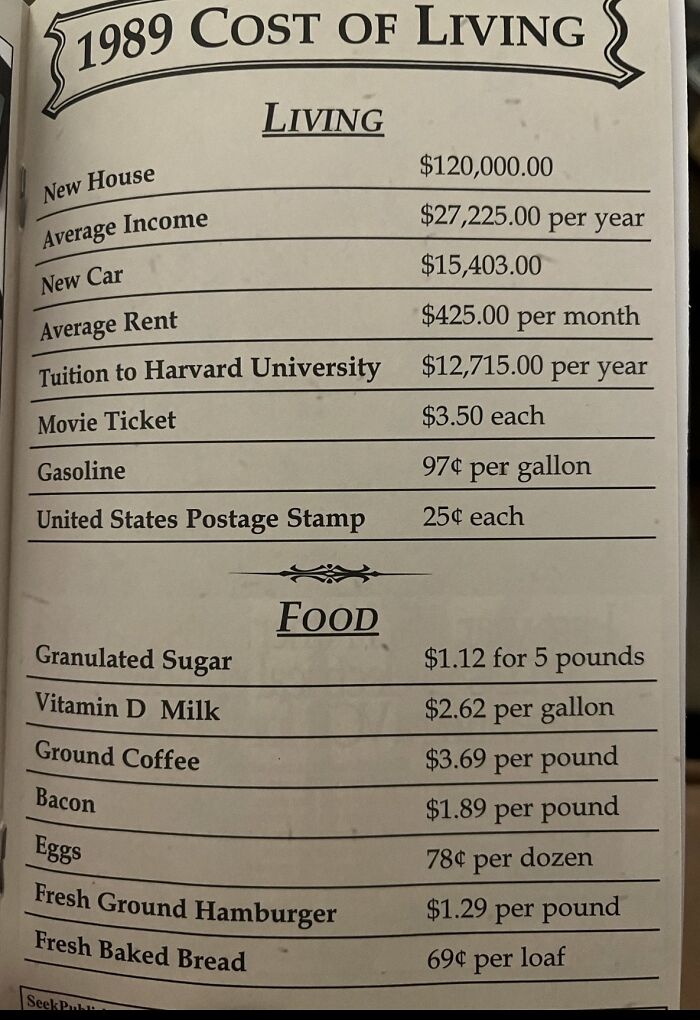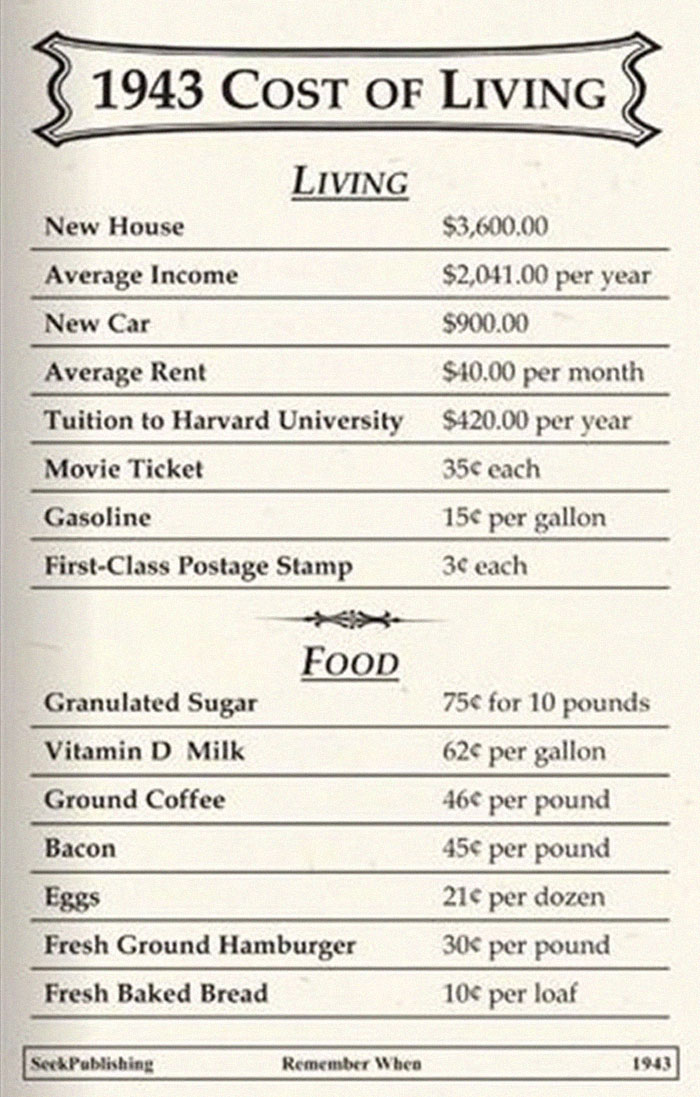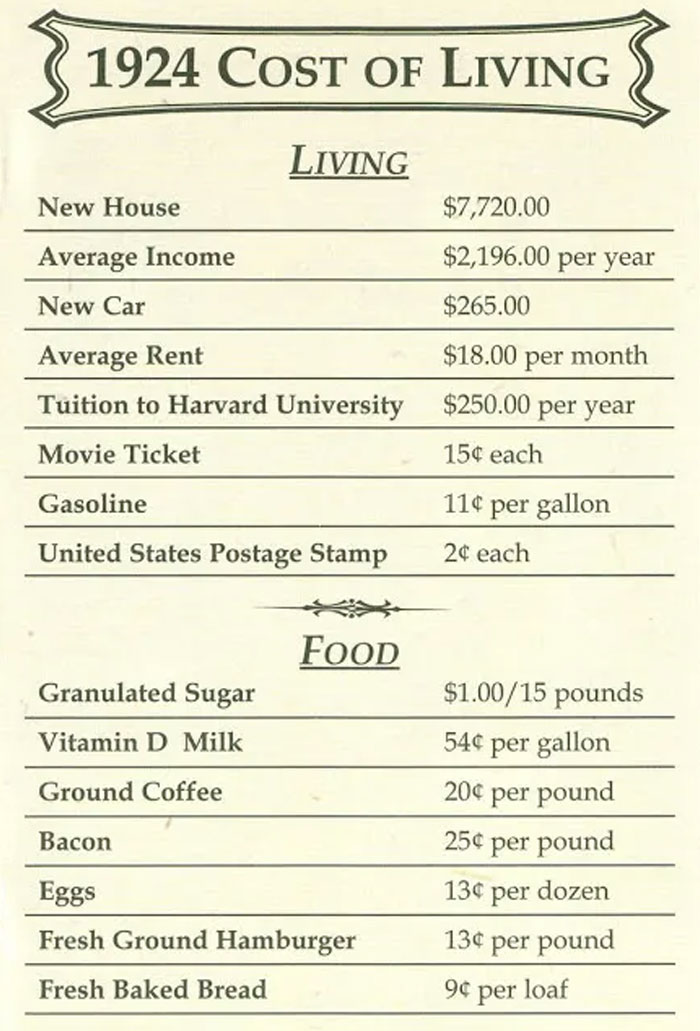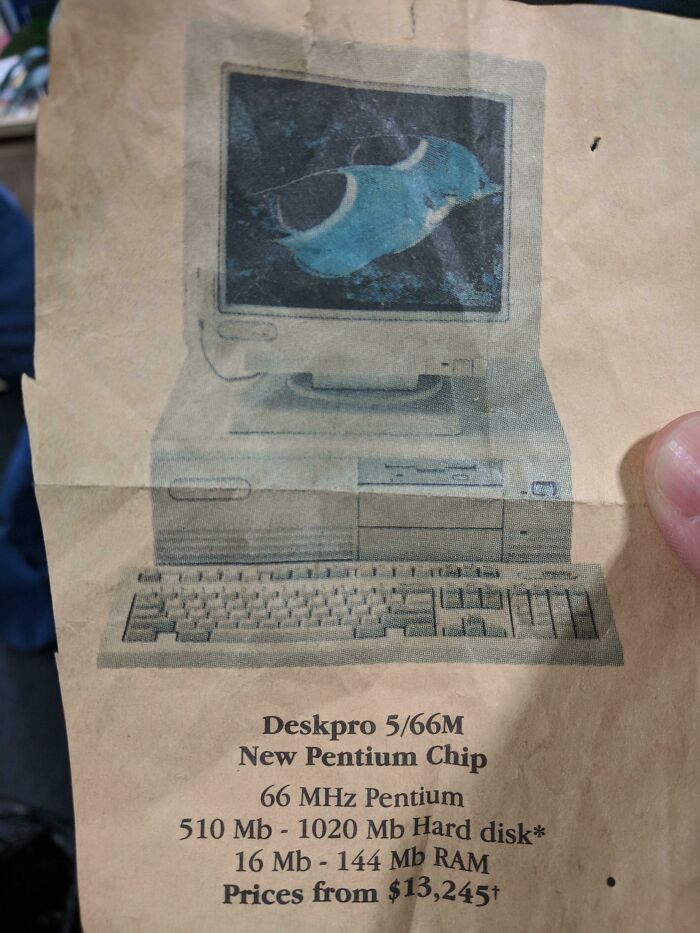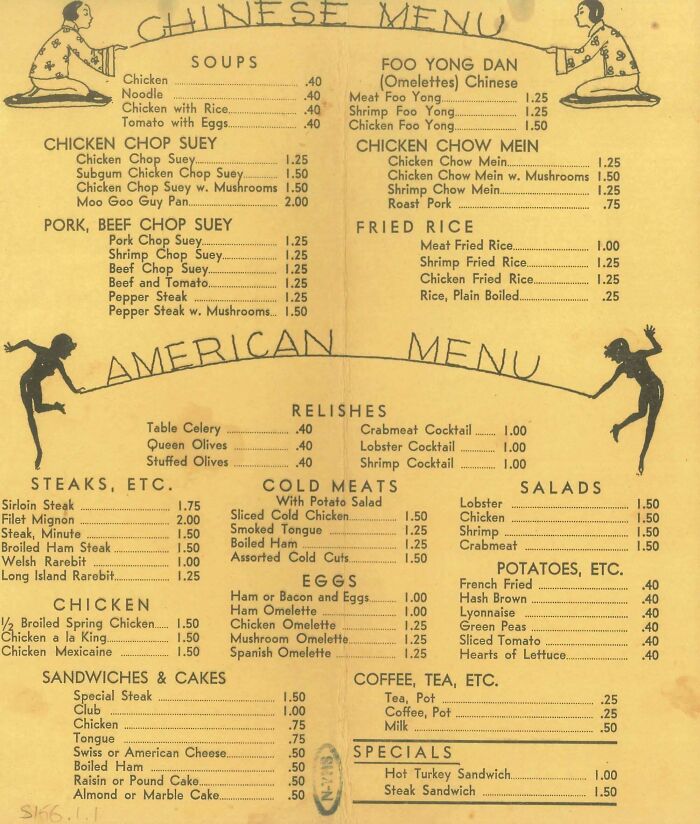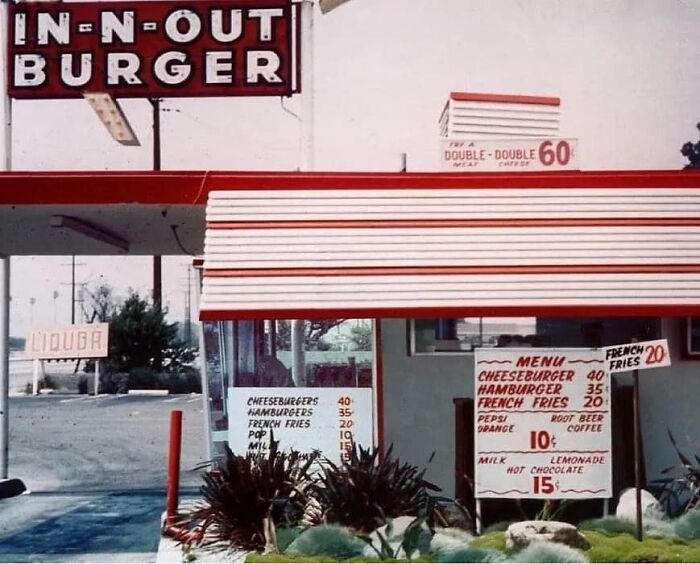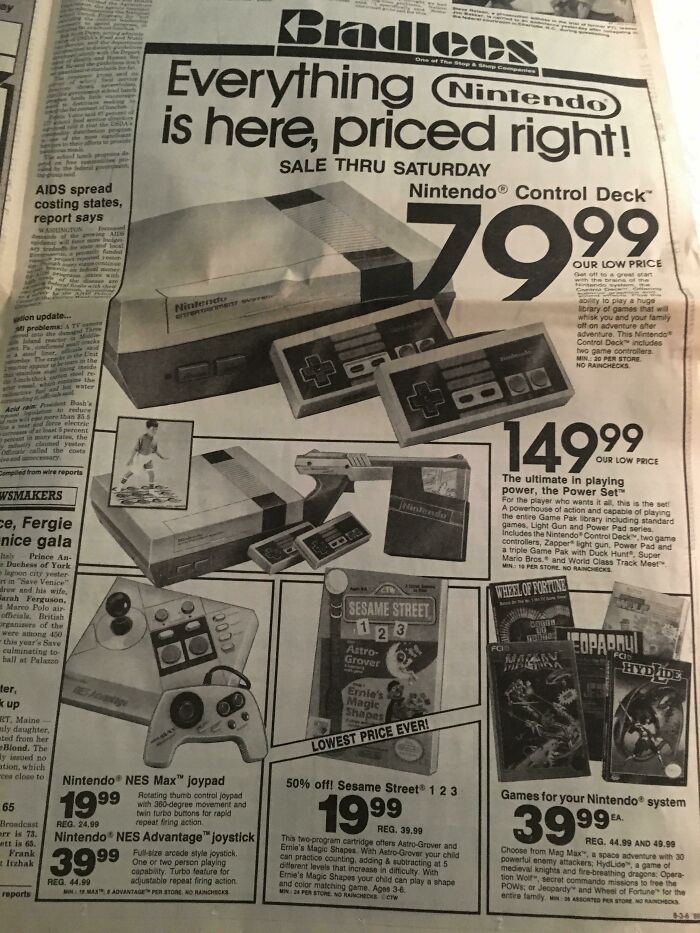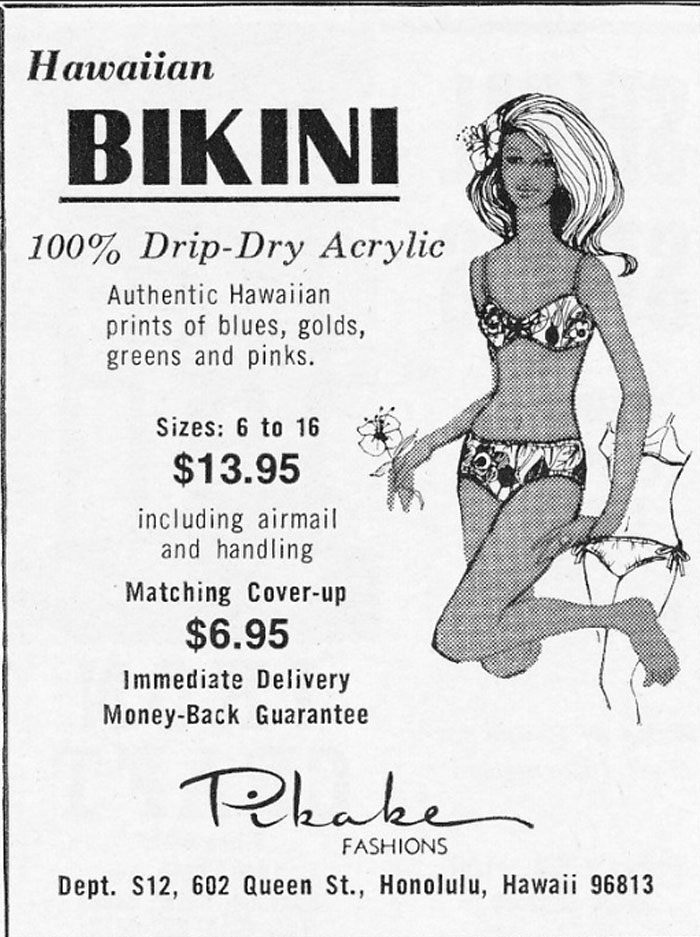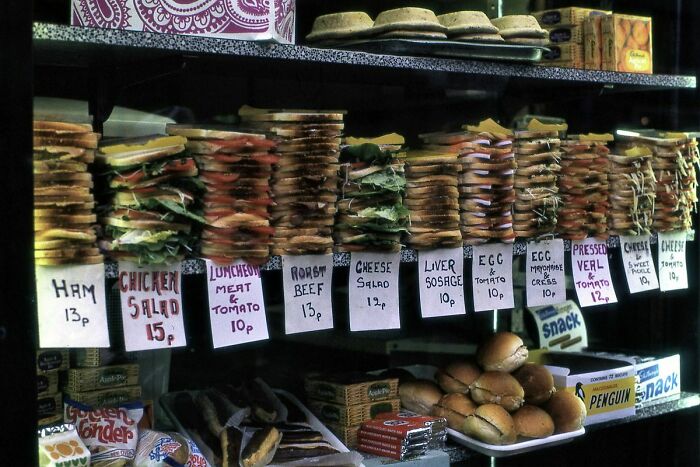
People Are Sharing Prices From The 20th Century To Show Just How Out Of Hand Prices Are Now (30 Pics)
InterviewOver the last few years, between the energy market going nuts, COVID-19, and inflation, people have become significantly more aware of just how much the cost of living is spiraling out of control. It’s a pretty common refrain, that many younger people can’t afford housing, but this has started to expand to cars and even groceries.
So we’ve gathered some examples of what things used to cost in the US, from “cost of living” lists, to old menus and ads. From the cost of tuition at Harvard in the 1850s to McDonald's items, back when they just cost a few cents. We also got in touch with Daniella Flores from iliketodabble.com to learn more about managing money.
This post may include affiliate links.
1916 Sears Catalog Home
They shipped the entire house to you by railroad car. Sears was like Ikea before Ikea. Friends and family would come from all around to help the owner build it.
My Grandmama Just Passed Away And We Found The Hospital Bill Of When She Had My Aunt In 1957. Insurance Paid $100 So They Ended Up Paying $2.95 For Having A Baby
It still baffles me how expensive medical care is in the US. Having to pay to have a baby?! 😭 And even to just get an ambulance from what I’ve heard. Where I’m from it’s all free (public healthcare). There are also private hospitals where you have to pay but it’s still affordable to the general public for simple appointments and procedures (but can be expensive for surgeries, admissions, etc - still cheaper than the US!). I hope that the US can someday may this basic human necessity free or, in the least, more affordable to its people.
As a US citizen with what's considered very good medical, I still live in terror of a medical emergency or dental surgery. The cost of services has gotten completely untenable. It's all greed based, for profit companies that now own the hospitals, labs and even the ambulances are now usually third party companies.
Load More Replies...In the USA, people care more about money and profit than they do each other's well-being.
I can say with a strong certainty that this is not limited to the US. We're just the most brazen about it. It's like even our government, both left & right, have quit even pretending to give two fhuks about its people.
Load More Replies...And people in the U.S. end up going bankrupt or dying because they can’t afford the insane prices for medical care even with insurance. And I get yelled at if I dare say universal healthcare would help resolve this.
Only the brainwashed right-wing Americans are yelling at you. We leftist Americans dream of what you have! Protect it at all costs!
Load More Replies...None of my babies cost more then 0. Everything about maternity is free in Sweden. You pay for parking if you dont want to use your free taxi ride to hospital.
You can thank Nixon for the changing hospitals to for profit and ending up losing most of the small town hospitals.
And then Reagan closed up ⅔ of the beds & services used for mental health care citing that they were only expanded to help returning military members from the Vietnam War and were no longer needed. It's going awesome now, don't you think? 😮💨
Load More Replies...My medical bills related to all my cancer treatments over 10 years? $4,000,000.00. That's right: Four Million dollars.
This was before health insurance was available, the prices started to climb rapidly after insurance companiew got involved.
i have the check my dad paid for my birth in 1955, $45.25 total....my child, normal birth, cost over $15,000 in 79!!!
Mcdonald’s Menu From 1959
It's not the prices that get me, it's all the adjectives that they're using.
Bored Panda got in touch with Daniella Flores, the Founder & CEO of iliketodabble.com, a site and blog dedicated to helping people manage their money. First and foremost, we were curious to hear what she thought is the biggest misconception most people have about managing money.
“That you have to use a strict budget and restrict your life, you can manage your money and still live your life too. Instead of cutting on the things you love, review your spending and look for the purchases that you don't remember or notice that you spent that money on something that didn't matter much to you - that is what you should cut. Spend money on the things that matter to you and cut what doesn't.”
Cost Of Living In 1938
Vintage Travel Ad - Hotel Las Brisas, Acapulco, Mexico - 1965
Housing Ad From 1955
I wonder if 70 years from now people will look at the $230,000 I paid for a co-op junior 4 and think "wow what a steal"?
In general, many people get uncomfortable around the idea of managing their money and making a detailed plan for the future, so we were curious to hear her take on what pushes people away. “Money is emotional with beliefs that get ingrained in us from childhood. It is difficult to face that head-on, review your spending, and actually create a plan to manage your money. That's why it's great to work with a financial coach who can talk you through that process in a non-judgmental way.”
McDonald's Extra Value Menu 1993
Hospital Bill From When My Grandpa Blew Up A Stump With Homemade Tnt And Lost His Eye
“Your beliefs about money might lead you to think you're "bad with money", but that isn't true. The game is rigged but that doesn't mean that you shouldn't educate yourself about financial wellness. Learn how to navigate the financial system in a way that works best for you, and who knows - maybe you can help change it one day.”
A Woolworth’s Menu From The 1960s When They Served Food
It should be noted that these prices were for the American Woolworth’s.
The Westerner Motor Hotel
The Taco Bell Five! (1968)
Daniella left us some suggestions of where to start if someone was dealing with a lot of financial insecurity or was just looking at a beginner's guide to investing. You can also find more on the iliketodabble X and Instagram page. Because looking at these prices might seem sad, but it’s always better to think about the future.
The Original Burger King Whopper In 1963
1947 Hospital Bill Found Out My Parents’ Attic. Not Sure Who It’s For
The Bill For A Semester At Harvard, 1869: $170.42
While many people have accepted that things are terrible, some economists argue that, to some degree, the discourse around the economy is dominated by bad vibes and not facts. Kyla Scanlon, financial analyst, writer, and content creator coined the term “vibecession” to describe the strange disconnect of the US avoiding a recession while many people in it vehemently believe the sky is falling.
Danish Modern Furniture Ad 1962
"Vacation Specials" - Steve Aloi Ford Ad [c.1970]
Sears Men's Fashion 1960's
Despite all the doom and gloom, economic indicators show that wages are growing alongside the economy. While our current prices are, obviously, higher, due to inflation, some people seem to be working from the misguided position that prices would go down or that there would be deflation, ignoring the fact that this would actually be an indicator of inflation.
Cost Of Living 1989
St. Luke Hospital - 1950s
The baby care charge from the 1947 bill in an earlier post was only $1 a day. Looks like the price gouging was well and truly starting in the 1950s
Kentucky Fried Chicken
Cat's Meow Restaurant, Fort Lauderdale Florida, 1950s Menu
1943 Cost Of Living
Vintage New Home Advertisement, Toronto With $500 Bonus!
1960's Cocktail Menu From The 'Cannibal Room' At Ren Clark's Polynesian Village In Ft. Worth, Tx
Retro Fast Food Nostalgia
1959 Cost Of Living
McDonald's Menu From 1925
Ad For Space Shoes 1962
1924 Cost Of Living
For such lists to make any sense, they should be compared with a list of average earnings.
Agreed. This is idiotic. Former prices only matter in relation to former wages.
Load More Replies...The list was chronologically sorted at the beginning, the only good way for this article. Now everything is moving around based on a useless popularity system, it sucks big time.
A large part of what this illustrates is the income inequality in the US, and the impact it has on "average" and "median" incomes. When many of these comparisons were done, the average and median incomes were very similar, as they should be. But now, the "average" US salary is near $60k per year. The "median" salary is closer to $33k. The average is skewed by the impact of the"1%" and others with huge salaries. These prices have (with notable exceptions for medical costs, real estate values, and tuition), have increased normally. Unfortunately, salaries, since around 1980, have flat-lined, and have not increased proportionally. There has been some gains recently, but they have still not caught up, nor are they keeping up.
I've yet to see or hear any definition of inflation that convinces me that inflation isn't a wholly made up thing to justify higher cost for goods and services. Theoretically, prices should have stayed the same through time since technology has, by and large, made it more cost effective to produce the raw materials as well as value added products. The truth is that it's all artificially manipulated to reap the biggest benefit for the fewest.
match these prices with wages of the time. when I began working, gas and cigarettes both cost less than 50 cents, at same time, I was making less than $1.75 an hour.
My first teaching job paid 4800 for the year. I could not afford day care so I stayed home... and that was the best decision I ever made !!!
Load More Replies...This article doesn't make any sense. It doesn't adjust things to inflation and wages today. Not to mention, there's also the fact that maybe former prices were because certain things were more abundant, or that certain chemicals or materials were allowed back then that are now banned today. If it did adjust, we would be able to see whether these "former prices" really were cheaper.
That’s literally the point of the article… to show the inflation.
Load More Replies...Would have been a better article if all the prices were also shown adjusted for inflation, otherwise they're e a bit meaningless unless you can see how much they would have been in todays' prices.
For such lists to make any sense, they should be compared with a list of average earnings.
Agreed. This is idiotic. Former prices only matter in relation to former wages.
Load More Replies...The list was chronologically sorted at the beginning, the only good way for this article. Now everything is moving around based on a useless popularity system, it sucks big time.
A large part of what this illustrates is the income inequality in the US, and the impact it has on "average" and "median" incomes. When many of these comparisons were done, the average and median incomes were very similar, as they should be. But now, the "average" US salary is near $60k per year. The "median" salary is closer to $33k. The average is skewed by the impact of the"1%" and others with huge salaries. These prices have (with notable exceptions for medical costs, real estate values, and tuition), have increased normally. Unfortunately, salaries, since around 1980, have flat-lined, and have not increased proportionally. There has been some gains recently, but they have still not caught up, nor are they keeping up.
I've yet to see or hear any definition of inflation that convinces me that inflation isn't a wholly made up thing to justify higher cost for goods and services. Theoretically, prices should have stayed the same through time since technology has, by and large, made it more cost effective to produce the raw materials as well as value added products. The truth is that it's all artificially manipulated to reap the biggest benefit for the fewest.
match these prices with wages of the time. when I began working, gas and cigarettes both cost less than 50 cents, at same time, I was making less than $1.75 an hour.
My first teaching job paid 4800 for the year. I could not afford day care so I stayed home... and that was the best decision I ever made !!!
Load More Replies...This article doesn't make any sense. It doesn't adjust things to inflation and wages today. Not to mention, there's also the fact that maybe former prices were because certain things were more abundant, or that certain chemicals or materials were allowed back then that are now banned today. If it did adjust, we would be able to see whether these "former prices" really were cheaper.
That’s literally the point of the article… to show the inflation.
Load More Replies...Would have been a better article if all the prices were also shown adjusted for inflation, otherwise they're e a bit meaningless unless you can see how much they would have been in todays' prices.

 Dark Mode
Dark Mode 

 No fees, cancel anytime
No fees, cancel anytime 





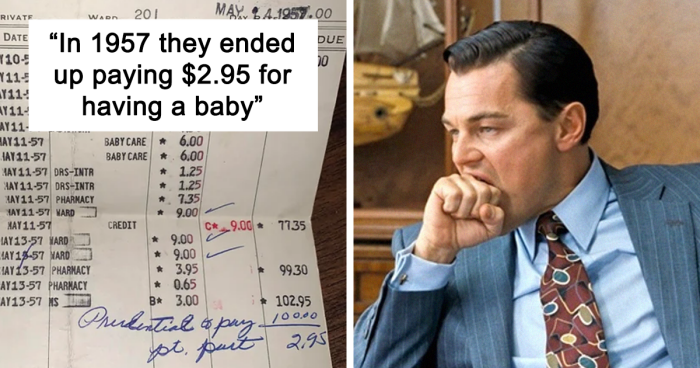












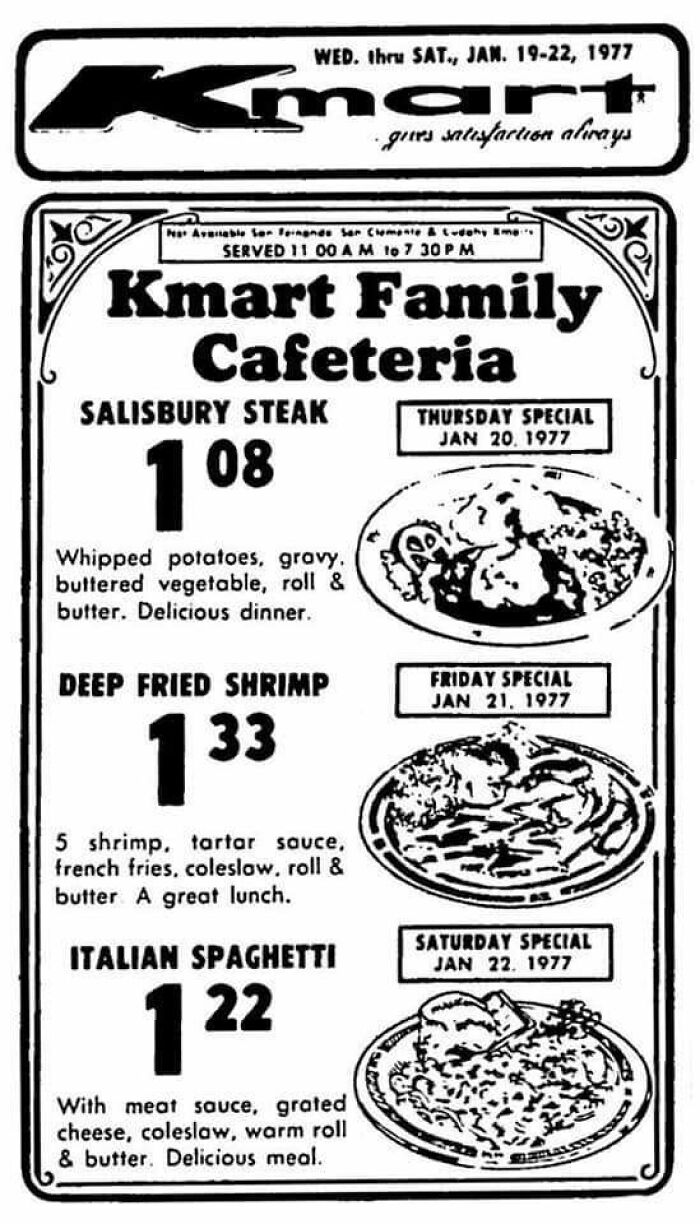





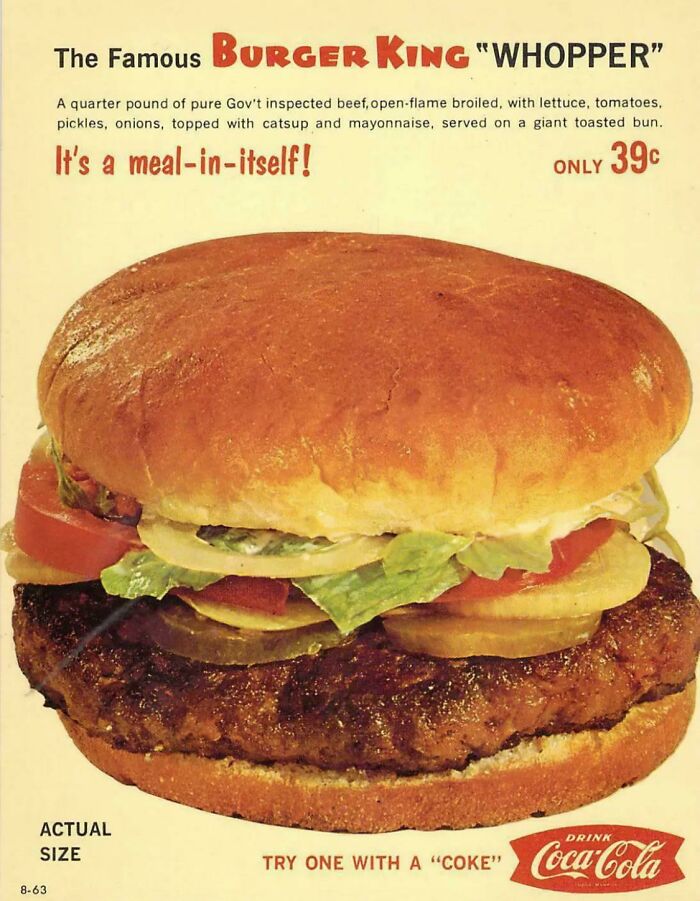


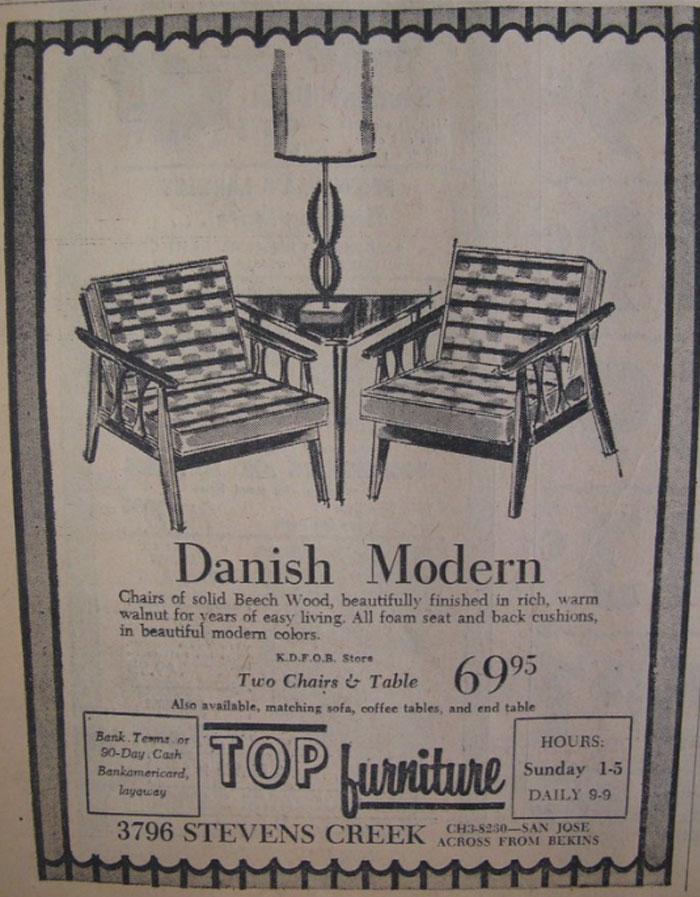
!["Vacation Specials" - Steve Aloi Ford Ad [c.1970] "Vacation Specials" - Steve Aloi Ford Ad [c.1970]](https://www.boredpanda.com/blog/wp-content/uploads/2024/01/cost-of-living-prices-past-65b0c37dc0199__700.jpg)

